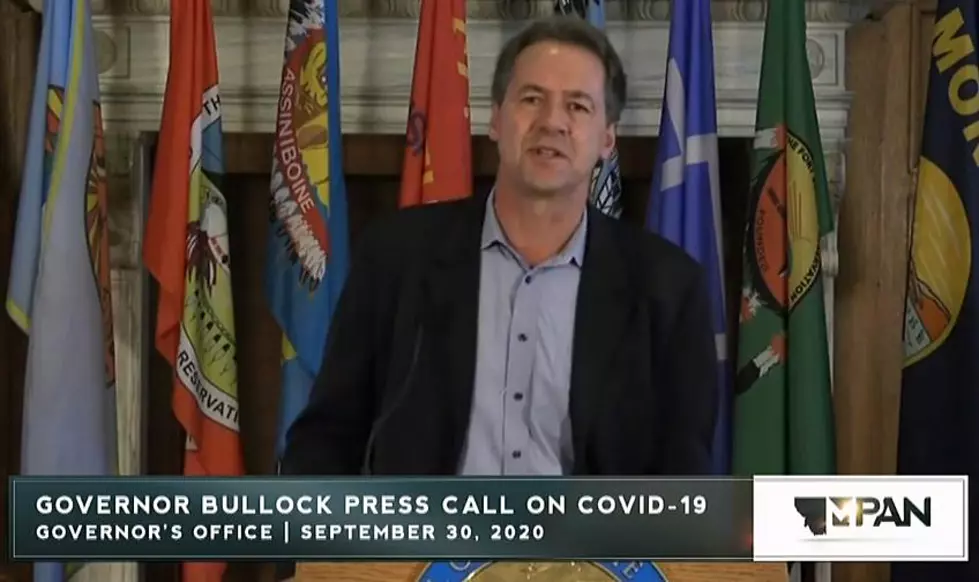
‘We’re losing ground:’ Bullock, hospitals cite resource constraints as COVID cases climb
With the number of new daily COVID-19 cases in Montana at a record high, Gov. Steve Bullock said Wednesday the virus is leading to resource constraints in parts of the state but stopped short of enacting further restrictions.
Hospital officials on this week's press call said they were losing ground against the virus and feared they could reach maximum capacity in the coming weeks as the flu season collides with the pandemic.
“Many Montanans are taking their personal responsibility of protecting others seriously,” Bullock said. “Yet in some ways there are some Montanans acting as if this virus no longer exists. We need all Montanans and businesses to act as if this virus is still in our midst, because it is.”
Last week, more than 1,750 new cases of COVID-19 were recorded, up 502 cases over the prior week. The virus has appeared in schools, correctional facilities and nursing homes. A number of clusters have been reported as well, along with community spread.
Across the state, six counties currently represent 65% of all new reported cases, including Missoula, Flathead, Gallatin, Cascade, Roosevelt and Yellowstone. Wednesday saw another 348 new statewide cases with 170 active hospitalizations.
To date, 180 people have died from the virus in Montana.
“There's no metrics for moving back to Phase One,” Bullock said. “We'll continue to talk to public experts and public health recommendations and evaluate the data of new cases and our positivity rate. More than the restrictions, we know what needs to be done to get our hands around this virus.”
While state and most local health officials have urged mask wearing, hand washing and social distancing, the number of cases have jumped in recent weeks. The largest case count over the summer hit 208 on July 24.
But starting on Sept. 16, the state has recorded more than that number on all but three days. The 348 cases on Sept. 29 is the most in a single day since the pandemic began, and six of the last seven days have seen 300 cases or more.
“The fact is the virus is leading to resource constraints, placing a burden on local public health,” Bullock said. “We're also in the process of filling additional personnel resource requests in anticipation that we'll need additional volunteers with medical expertise to help fill in when resources become limited or healthcare workers become sick.”
A number of state hospital leaders confirmed that resources were growing limited. Benefis Hospital in Great Falls is at 115% capacity with 37 patients hospitalized for COVD, including seven in intensive care.
Jim Murphy, head of infectious diseases for Montana, said specific concerns are emerging in certain regions.
“We have seen some instances there (Billings) where supplies are getting tight, and as we enter respiratory season in the fall, there's concern that those systems are going to be even further stressed,” said Murphy. “There have been days where they're down to single digits in capacity, with only like 8% of beds remaining. This is something we're watching closely.”
Dr. Shelly Harkins, the chief medical officer at St. Peters Health in Helena, also shared those concerns.
“We are losing ground against the spread of this virus,” Harkins said. “We anticipate that based upon the increased number of cases, we will see an increasing number of hospitalizations over the coming weeks and months. At this pace, we may reach our maximum capacity here at St. Peters Health.”
Bullock said the state has increased its testing capacity in recent weeks, with Montana State University conducting 1,000 tests a day. MAKO Medical, the lab contracted by the state in North Carolina, is conducting 2,000 daily tests while the state lab has added new testing equipment, allowing it to process 1,300 tests a day.
In the event that hospitals reach capacity, Bullock said the state has plans to roll out temporary hospitals.
“We set up an overflow facility that's in a permanent position in the Flathead,” Bullock said, adding that a second mobile facility was available for movement in Billings. “That could be deployed in Billings or other areas around the state. We have that readily available. I hope we don't need it.”
